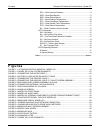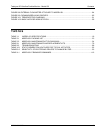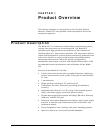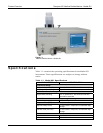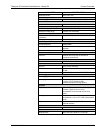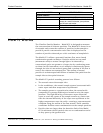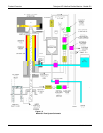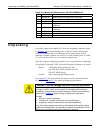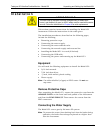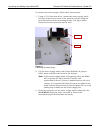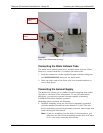
Product Overview Teledyne API Ultrafine Particle Monitor - Model 651
20 07506C DCN6727
PARAMETER SPECIFICATION
Physical Features
Front panel Display, sample inlet, LED particle indicator
Back panel
Power connector, USB, Ethernet, RS-232, BNC
output, fan, water fill connector, pump exhaust
port, fill bottle and bracket
HxDxW 20.3 x 48.3 x 30.5 cm (8 x 19 x 12 inches)
Weight 9.9 Kg (22 lbs)
How it Works
The Ultrafine Particle Monitor - Model 651 is designed to measure
the concentration of airborne particles. The Model 651 draws in an
air sample and counts the number of particles in that sample to
provide a particle concentration value that is displayed as the
number of particles detected per cubic centimeter of sampled air.
The Model 651 utilizes a patented
*
laminar-flow, water-based
condensation growth technique. Particles which are too small
(nanometer scale) to scatter enough light to be detected by
conventional optics are grown to a larger size by condensing water
on them. In this instrument, an air sample is continuously drawn
through the inlet via an external pump and a portion of the flow is
sent to the exhaust as transport flow. The stream of aerosol
particles is uninterrupted and follows a laminar flow path from the
sample inlet to the optical detector.
The Model 651 particle counting process is as follows:
The aerosol enters the sample inlet.
In the conditioner, the aerosol sample stream is saturated with
water vapor and then temperature-equilibrated.
The sample passes to a growth tube where the wetted walls
(composed of a porous medium) are heated to raise the vapor
pressure. The high diffusivity of the water vapor allows the
vapor to reach the center of the sample stream at a faster rate
than the thermal diffusivity of the vapor can equilibrate to the
higher temperatures near the walls—creating a supersaturated
condition along the radius of the flow stream. These unstable
conditions facilitate water condensation on the sample particles.
Particles that are larger than the detection limit of the Model
651’s minimum critical particle size act as condensation nuclei
as they pass up the growth tube.
*
US Patent No. 6,712,881, Aerosol Dynamics Inc., Drs. Susanne V. Hering and Mark Stolzenburg.



